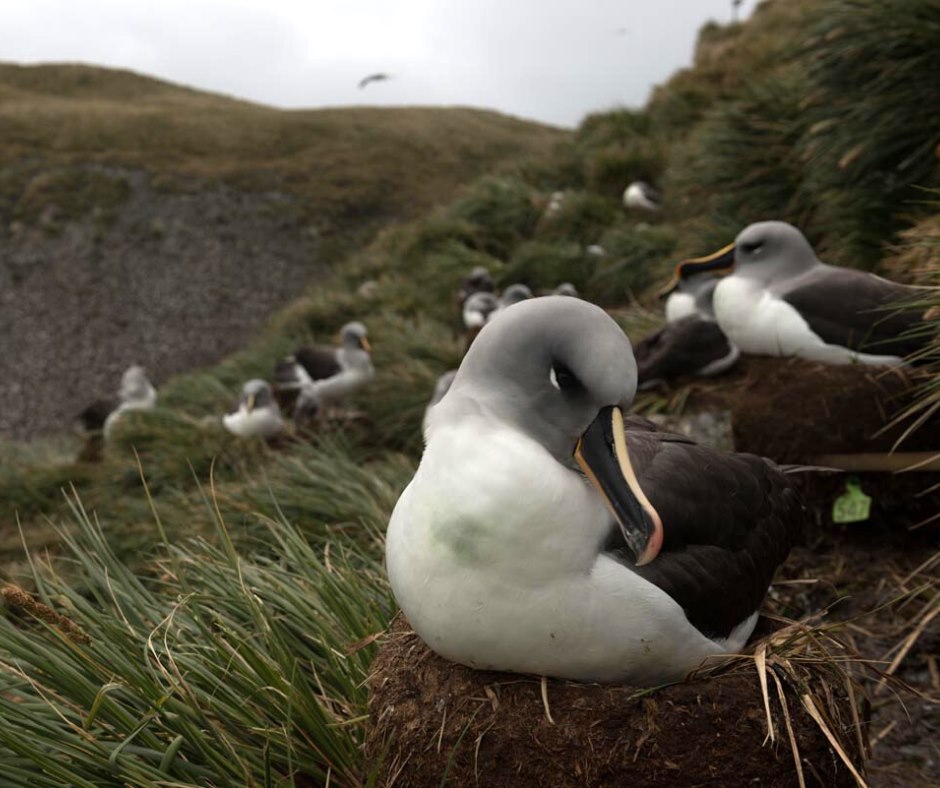
Fundraising target: £2,100 +
Funds donated: £2,500
Project: to identify the marine areas and fishing fleets that are the highest contributors to the ongoing bycatch-related decline in populations of South Georgia wandering, grey-headed and black-browed albatrosses. The project will develop joint solutions with the target fleets and is also developing new approaches to highlight the plight of South Georgia albatrosses.This is one of 21 projects nominated for our 21 For 21 programme.
21 For 21 Project Partners: RSPB, Birdlife International and South Georgia Heritage Trust
Find out more about RSPB, Birdlife International and the South Georgia Heritage Trust.
About South Georgia Heritage Trust (SGHT) , the RSPB and BirdLife International
SGHT was established in 2005 to help efforts to conserve and protect those species of indigenous fauna and flora that breed and grow on South Georgia or in the surrounding seas and to raise awareness of South Georgia’s threatened species.
The RSPB is the UK’s largest nature conservation charity, inspiring everyone to give nature a home and secure a healthy environment for wildlife.
BirdLife International is a global partnership of conservation organisations that strives to conserve birds, their habitats and global biodiversity, working with people towards sustainability in the use of natural resources.
Albatross
Albatrosses are some of the most threatened groups of birds in the world, and South Georgia’s species are experiencing some of the steepest declines. South Georgia, in the southern Atlantic Ocean is over 800 miles from any other land and is a globally significant breeding site for several albatross species including grey-headed (50% of world population), wandering (18% of world population) and black-browed (12% of world population). Wandering Albatross populations have halved in 35 years due to human activity. 15 of the 22 species are threatened with extinction.
Albatross can live for as long as 50 years. Courtship involves an intricate ritual of dancing. Once a pair is established, the bond lasts for life and both take on parenting responsibilities. The Wandering Albatross takes over a year to raise a chick (from laying the egg to fledging).
By-catch
Bycatch in fisheries outside of South Georgia waters has been identified as the primary driver of population declines in many seabirds including albatross. By-catch refers to any unwanted species unintentionally trapped by commercial fishing nets. Conclusive research has found that Japanese and Taiwanese tuna fleets pose the greatest threat to South Georgia’s albatross.
Birds flock to the boats in search of scraps but tragically it is estimated that around 100,000 albatrosses are killed every year in the process by longline and trawlers. The birds become tangled and drown, or are struck by trawler cables and dragged under the water.
It can take 10 years for an albatross to reach maturity and breed so this level of loss is unsustainable for the population.
Japan continues to have one of the largest fishing fleets in the world that overlaps with and impacts South Georgia albatross species. There is, unfortunately, still a reporting of low levels of compliance with seabird mitigation measures. As such, Japan remains a vital country to engage with to reduce the numbers of birds killed.
Action for Albatross
Over the last few years the project has made good progress, although this has been slowed by the global pandemic.
A dedicated bycatch officer has been working in Japan to engage with the tuna fishing industry and Japan Fisheries Agency. The Japan Fisheries Agency (JFA) has started applying stronger pressure to fishing companies to comply with seabird bycatch mitigation requirements. Simple measures such as fishing at night when birds are less active, weighting lines so they sink faster, and using bird scaring lines to keep birds out of danger areas all help to reduce by-catch of seabirds.
Satellite-tracking has helped to fill knowledge gaps in the at-sea distribution of immature and juvenile albatrosses from South Georgia and answer questions about the birds interaction with fishing fleets. Tags were deployed on 16 grey-headed albatross chicks and their tracking data has demonstrated these fledglings travel up to 55,000 km in just seven months. The data has been used in a PhD study to further refine potential hotspots of bycatch for this species. A paper is due to be submitted to a journal shortly, that confirms a newly identified hotspot in the Atlantic for juvenile grey-headed albatross.
A camera has been deployed on South Georgia’s Bird Island capturing footage of these enigmatic birds. The web camera is specially designed to work in remote and extremely cold environments. ‘Albatross Stories’ has launched on social media to engage the public in albatross conservation and connect them with the lives of certian individuals including Skylander, a grey headed albatross who has recently had chicks (pictured right – image credit Alex Dodds).
Albatross Task Force
21 For 21 Funding will support the wider work of the Albatross Task Force. For example, to fund further tracking devices for the Bird Island Albatrosses.
To follow the lives of South Georgia’s Albatross on Facebook please click here.
Visit Antarctica through our responsible travel network.
Images courtesy of Derren Fox, Leo Tamini and Alex Dodds, Albatross Task Force





All funds raised during 2021 will contribute to the 21 For 21 Project Fund so please do sign up for a sponsored challenge (details here), support our creative initiatives, or make a donation if you are able to. Every Pound makes a difference. Thank you.





